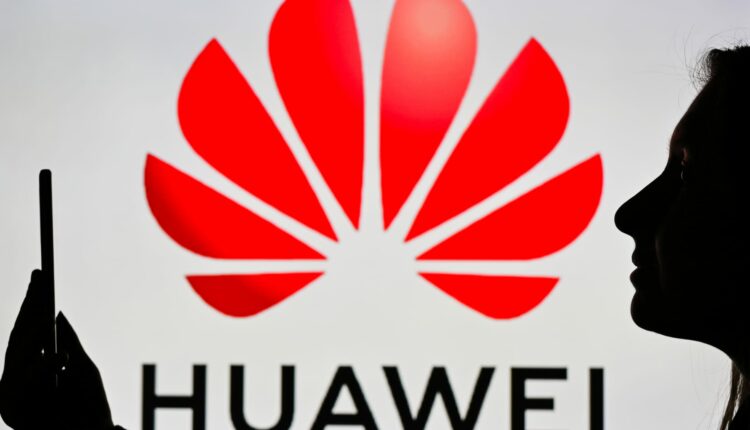©2021 Reporters Post24. All Rights Reserved.
Huawei’s mobile telecom business is on the rebound with the recovery of its smartphone market share in China and the deployment of a 5.5G pilot network in Beijing.
Both are making meaningful contributions to the company’s overall sales, which increased by more than 9% in 2023, according to a Huawei company statement by rotating chairman Hu Houkun, also known as Ken Hu.
America’s Apple also performed well in China’s coveted cellphone market last year. According to preliminary data from global market intelligence firm International Data Corporation (IDC), Apple led the market for the first time with a 17.3% market share and 20.1% in Q4 but the company’s sales were actually down 2% year-on-year in both periods.
Huawei was not in the top five over the full year, but following the release of the 5G Mate 60 Pro smartphone, its shipments were up 36% year-on-year in Q4 and ranked fourth with a market share of 13.9%. The Mate 60 Pro was announced in late August, deliveries started in September and it was subsequently sold out for weeks.
This was accomplished in a difficult operating environment. Total smartphone shipments in China dropped 5% in 2023 to 271.3 million units.
That represented about 25% of global smartphone sales, which were down 4%. Sales in China were up 1% in Q4 after ten quarters of year-on-year declines while global sales were up 8%.
Huawei aims to double its smartphone shipments in 2024 while ditching Android in favor of its own operating system. On January 18, the company announced the latest version, HarmonyOS NEXT, which will not support Android apps.
The beta version for developers is scheduled for release in Q2. The consumer version is likely to be installed in new Mate series phones expected to go on sale by the end of 2024.
Huawei is also making progress with 5.5G, an improvement on 5G also known as 5G-Advanced that Huawei first proposed in 2020.
In 2021, 5.5G was designated as the second phase of 5G by the 3rd Generation Partnership Project (3GPP), an international association of seven telecommunications standard development organizations.
In January 2024, Huawei and wireless carrier China Unicom announced the deployment of a pilot 5.5G network in Beijing that will cover Beijing Financial Street, the Beijing Long Distance Call Building and Workers’ Stadium. The two companies expect it to become the benchmark for future 5.5G networks and applications in China.
The performance of the pilot network was evaluated during an event organized by the Beijing Institute of Communications, which brought in foreign and domestic experts from the Global System for Mobile Communications Association (GSMA), China’s Telecommunications Development Industry Alliance (TDIA), the China Media Group and other industry organizations.
During the tests, the network reportedly achieved “a downlink peak rate of 10 Gbps and continuous experience exceeding 5 Gbps, surpassing 5G by 10 times.” This supported glasses-free 3D, ultra-high-definition real-time broadcasting, as well as Virtual, Augmented and Extended Reality applications.
The development of Extended Reality (XR), the convergence of AI-generated content and 5G devices, and the adoption of 5G applications by private companies and government agencies have propelled live streaming and the implementation of digital technology in general.
In industry and logistics, the faster transmission rates and lower latency offered by 5.5G is expected to drive demand for an estimated 100 billion IoT connections.
This squares with what Huawei said during the Mobile World Congress Shanghai at the end of June 2023 when it announced plans to launch a complete set of commercial 5.5G network equipment in 2024.
Almost a year ago, at the last Mobile World Congress in Barcelona, Spain, Huawei said “5.5G will expand on 5G but will be faster, more automated and more intelligent,” creating “100 times more opportunities” for a growing number of users.
In July 2022, Huawei executive director David Wang predicted that “AI will be fully integrated into enterprise production processes and the size of the 5.5G IoT market will grow rapidly. Collaboration between robots and people in complex scenarios will impose greater requirements on next-generation industrial field networks.”
Autonomous driving is another obvious application.
Huawei has collaborated with China Unicom on 5G network construction since 2019. It has also worked with some 30 other telecom network operators around the world on the verification and application of 5.5G technologies.
The company plans to focus on 5.5G at this year’s Mobile World Congress event in Barcelona to be held from February 26 to 29.
Nokia, Ericsson, Samsung and the Japanese are also working on 5.5G but Huawei is already putting it into practice. It is one more item on an ever-longer list of things that China’s high-tech champion is doing that US-led tech sanctions were supposed to have hampered.


